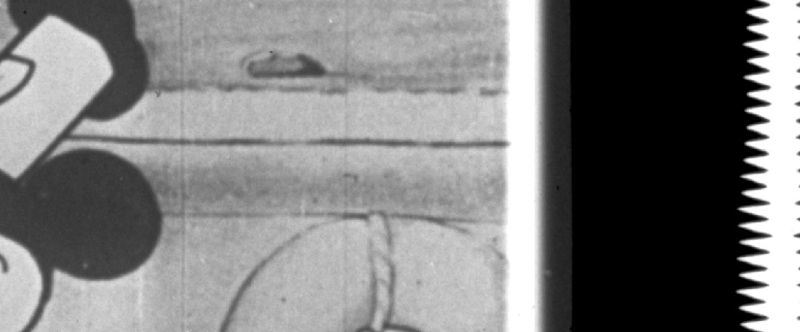Mickey Mouse’s introduction to the world was the 1928 cartoon, Steamboat Willie. Not only was it the first appearance of Mickey with sound, it was also one of the first cartoons to employ synchronized sound. The problem is, the sound is awful. Sure, after nearly a century, what do you expect? But [Oona Räisänen] thought it wasn’t just age, but flutter from the original recording. Could it be made better? What follows that question is a self-described geek’s journey into the depths of recorded sound.
The first step was to find a high quality source. The Internet Archive had a copy that was mostly clean. But it also has a lossless scan of the movie including the original optical soundtrack. A quick script played back the original soundtrack and — you guessed it — the flutter is already there. You can see the original 7-minute short from Disney’s channel, below.
Next, a detailed analysis identified a 15 Hz as the flutter’s period and another custom tool allowed manual identification of the frequency speed for different areas of the film. Drawing on some older software made to correct VHS tapes by employing Lagrange interpolation, it was possible to filter out the 15 Hz component and use it to control the playback speed. There are several clips and you can tell it is quite an improvement in most cases.
Unsurprisingly, there were also bits of artifacts at 24 Hz and 60 Hz, the rate of the film and the power line frequency. Now that the copyright on the film is expired, someone could do a major audio and even video restoration on the film. We’re guessing someone will. Just hope they get the details right.

















I am guessing that flutter is acting a bit like FM – I really admire a person that was able identify that from recording and than to “demodulate” signal.
This brings a question – every turntable has it’s flutter so would it be possible to digitalize signal and correct that in real time?
The flutter in a turntable is minimal as the platers usually have a significant amount of mass. It has not been much of an issue since the days of idler wheel drive.
That being said, it would be interesting to see if you could speed the tape perhaps 3 times and see if you could pick up any residuals of the bias, than you have what should be a stable frequency and if it is not, the reproduction speed needs to be adjusted in real time until it is.
The flutter was probably an early attempt at Digital Rights Management. Disney didn’t want kids sneaking into theatres with their Edison recording cylinders and making bootleg copies.
That’s an interesting thought. Though by “kids” we might think of adults at the time. Cartoons originally weren’t meant for children. Disney did a lot of propaganda cartoons in early to mid 20th century, too. They were meant to entertain/brainwash US soldiers going to war. Speaking of, Hitler and his friends were Disney fans, too. I believe I saw it in a documentary here in German TV. He watched it in a country house in the mountains, to entertain his guests. History is strange sometimes.
I saw a Mickey character in a German Me 109’s squadron insignia, so it was surely not prohibited in wartime Germany.
Those soldiers were children.
15 Hz is 1/4th of 60Hz. Could it be that during some film processing or digitization, a main synchronous 60 Hz motor was used to drive some reduction gears with 1/4 ratio? Running the film 4 times slower was maybe needed in order to some processing to cope with?
If that were the case you wouldn’t see 15hz in the final product. If it occurred as you suggested then it would come out as 60hz. You would have to run the film 4X faster to get 60hz to show up as 15hz on the duplicate. That being said, you may be correct in reverse, maybe instead of going slow they could process the film faster than realtime and used 4x speed.
Why is this expired and when i want use the picture of einstein, still have to pay a institude in a country which is like virus to the human mankind?
Wow, so this is straight-up antisemitic bullshit. Did you somehow get the impression that this was a safe space for nazis, white supremacists, or other Jew-hating idiots to spout their stupidity, hatred, and racism? Cuz it isn’t. YOU ARE THE VIRUS.
To answer the factual question under the racist BS:
Pictures of Einstein were made later than Steamboat Willie, so the copyright on Steamboat Willie expired before the copyright on Einstein’s pictures.
Film has to move fast to the next frame and then stop long enough to project. Sound strip reading as well as writing has to be tape recorder smooth motion. A loose path “the loop” keeps these motions apart, mostly. Nothing’s perfect and this is what we got that long ago. I would expect that the time correction is more of a pulse than a sine wave. I ran and serviced 16mm equipment in high school. A tight loop would make the sound super fluttery.
Optical film audio without pictures was taken into multitrack realms that long ago as well.
Its a shame they edited Steamboat Willie for content.. at 5:50…
Sorry guys… the footage is too mature for you.